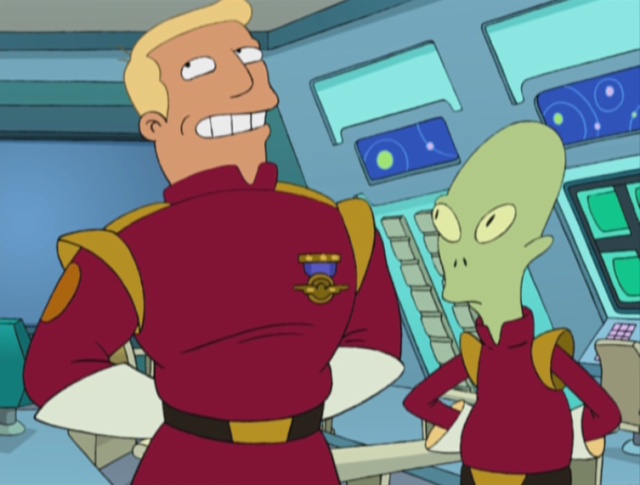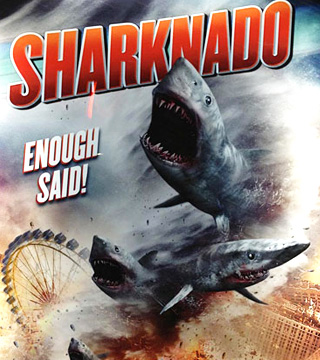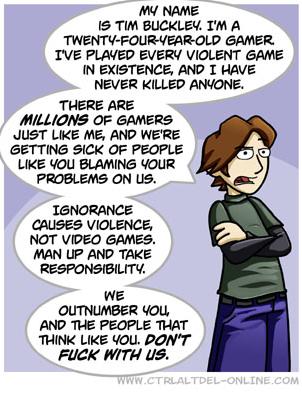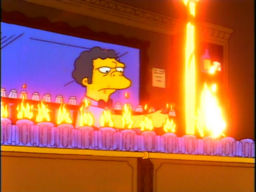This past weekend, I stabbed a guy in the neck, stole a precious ring, crashed a spaceship, killed Santa, blew up a building full of zombies, and ate four people.
That’s right, it was Jimcon.
Has it really been a year since the last Jimcon? And have I really only written three articles in that time?
Jimcon 3 was held last weekend at the Bronx Park Community Centre in Winnipeg, and I have to thank all the volunteers who made this happen. You guys and gals officially rule. Also, mad props to all the people who put their beards on the line (particularly the eponymous Jim and his rather distinctive braided beard) and in the end saw their beards make the ultimate sacrifice as part of the “save it or shave it” fundraiser for Manitobans living with epilepsy.
Anyways, Jimcon is awesome and so are the people there, especially the people who make it happen. Unlike last year, this year I focused solely on tabletop RPGs, both playing and DMing. Again, there was a wide variety of tabletop RPGs being played, I think even more than last year. This year they split Pathfinder and everyone else into two different rooms – and there was always something going on in the “everyone but Pathfinder” room. Now, on to the gaming!
Stuff I Played
I arrived the first night to find a curious situation – a couple groups with too few players to run their games. To salvage the night, we decided to merge our groups and sit down at a table with a lonely DM who had seemingly put some effort into setting up his D&D paraphernalia. It turns out he was running Chris Dias’ Ultramodern 4, which is basically a modern hack of 4e with guns. It’s a system whose basic rules are pretty much 4e, but the various classes all have some interesting and cool mechanics. We houseruled ammo tracking as “on a crit fail, you have to reload” which I thought was a pretty good idea because I hate tracking ammo.
Playing a group of commandos sent in to kill zombies and get the cure. The DM had in another game disallowed my choice of character name (“Zanne Thrax”), so I decided to use it here as a sort of passive-aggressive nerd revenge. Zanne was the squad medic, although she didn’t wind up doing a whole lot of healing. She also wound up being the squad demolitionist, when I found out she had a bunch of plastic explosives and detonators on her equipment list. We had a lot of fun killing zombies, and in true cheesy action movie form, the session ended with Zanne clinging on to the landing gear with one hand, and pressing the button on the detonator to blow up the zombie-infested compound with the other, while saying “lets blow this popsicle stand.”
Cheesy, I know. But awesome.
Next, I turned to Cosmic Patrol, a very rules-light system set in the world of cheesy 1950s science fiction. The system is extremely simple, with pretty much only two main rules:
1. You have a few ability scores which are expressed in dice (d6, d8, d10, and so on). To do something involving that skill, roll your stat die, a d12, and a d20. If the sum of the stat die and the d12 is greater than the d20 result, you are successful.
2. You generally go around in a circle, but someone can spend a plot point to jump the queue and add something to the scene.
This system really helps keep the narrative flowing, and things can easily go in absurd directions. Players are encouraged to really play up the archetypes of their character – the cocky pilot, the shoot-first-and-ask-questions-later army guy, and the nerdy scientist.
It’s a very simple and elegant system, and it has the potential for escalating awesome situations, although I think it’s also one where players really need to be on the same page. The plot points can be used not just to add character actions or complications to the scene, but also as a license to block other players’ actions and have the game descend into Paranoia. In the end, it was a mixture of awesome and frustration for me as we managed to do a lot of crazy, cool, pulpy stuff, but parts of the game descended into blocking and PvP, which I’m not a fan of. Just goes to show the importance of making sure your players are all on the same page.
I joined in a Christmas themed Gamma World game, run by the same DM as who ran the zombie game. Gamma World is a little crazy, and this adventure was no exception. With flavour text adopting the rhythm and rhyme scheme of Twas the Night Before Christmas, we went to. I played Robosaurus, the AI Sauropod who shouted “ROBOSAURUS!” a lot as he charged into battle. It was fun, and the rhyming flavour text was whimsical and enjoyable, but as someone who is used to stuff like , I’m starting to chafe at modules. They are railroads, plain and simple. Some of them are beautiful railroads, complete with amazing flavour text, but they’re still railroads. Now, I don’t mind from time to time sitting back, letting the railroad take me, and rolling some dice to fight guys on a grid. And it’s something that can work if the players are bought into it. But, after playing more open games, part of me wonders what the point is of playing through a story where the ending has already been written by a guy in Seattle.
Finally, I got to try out 13th Age, which was being run by Doc over at Shared Weave. 13th Age is a system which I’ve been wanting to try for a while. The concept of “Pathfinder, but for 4e” is one which I, as a 4e fan, am very excited about. With 4e being abandoned in favour of the horribly named D&D Next and Mearls doing his level best to ruin D&D for everyone (Although I think by saying that I’ve officially become a grognard), it looks like 4e’s days are numbered and someone is going to pick up the torch. In this case, it falls at the feet of veteran game designers Jonathan Tweet and Rob Heinsoo – a name which you may remember from the cover of the 4e PHB.
Anyways, I’m excited to see one of the designers behind 4e picking up the pieces and putting together a new system with elements of the old. While I didn’t get to play it for very long (we had to finish character creation in-session, and I had a game to run right after), I was not disappointed. It has a lot of elements from 4e – classes, feats, powers, and ability scores all looked very familiar – but is simplified enough that you don’t need a grid and minis. Zanne Thrax made her return as a halfling rogue, and using her Shadow Walk power, got in some good sneak attacks. You know you’re having fun with the fluff and mechanics when you say something like “okay, I’d like to jump off the windowshill, swing on the chandelier, and land on the big guy’s head like I’m going for a piggyback ride, and stab him in the neck until he’s dead.”
I didn’t get to see a few of the mechanics in action – icons and the escalation die, to name a couple, but these sound intriguing and I’ll have to find another opportunity to try it out.
13th Age is definitely going on my Christmas list. Too bad Robosaurus and friends killed Santa.
Stuff I ran
DMing for new groups of players is my favourite part of going to conventions. I love seeing both how players react to what I throw down, and also what they add to the skeleton worlds I create in my head. Although I couldn’t get enough players for one of my slots, I did manage to run a session of Dungeon World and my 4e adventure titled “Ded Zeppelin.”
Ded Zeppelin is an 8th level scenario with a bit of a Lair Assault feel to it – it’s just one big encounter with a lot going on, similar to Forge of the Dawn Titan. Now, this scenario violates one of my personal rules, which is never start your players in a tavern. However, I think I get a pass on this one because the tavern is on a Zeppelin, the pilots are dead, there is a bomb in the engine room, and the whole thing is being attacked by gnomish jewel thieves rappelling in from their mothership.
Oh, and also the gnomes might kill Elfa Fitzgerald and Dwarf Ellington.
But what is this great treasure that the thieves are after? Well, the players can decide! I always start this scenario with a few questions to build the world – go around the table asking characters to tell me a little about themselves and how they know each other. I also ask them to tell me what the treasure these gnomes are after is. I like to let my players have as much input into the world, so I let them decide what the McGuffin is. After all, it’s their game too, and they’re the ones trying to protect it!
It’s an exciting scenario, but also a difficult one. It’s probably a level 12 or 13 encounter, although being just one encounter means that players can dump all their resources into it. So far, no one has managed to get a super happy ending, with two of the groups I ran it for saving the treasure but having the Zeppelin destroyed, and this group losing the treasure but saving the Zeppelin (in this game, titled the “Stairway to Heaven”).
I love this scenario. It has everything you need in an awesome encounter – an interesting setting, a memorable opponent, nasty minions, and most importantly, goals for both Team Player and Team Monster outside of just “kill the other guys before they kill you.” PCs find themselves running back and forth across the Zeppelin to deal with the various problems that appear in the first few rounds of the encounter, and Team Monster focuses on its own nefarious goals.
I always find myself getting really excited when I run this scenario as well, shouting “awesome!” and loudly congratulating players on their badassery. Really, even though I’m playing Team Monster, we’re all on the same side. I want to see their characters do badass things as much as they do, and I’m more than willing to encourage that in a way which keeps the energy level at the table high (although I think the urgency of the diverse threats in different corners of the map in this particular scenario also do a good job of that).
This kind of set-piece battle is where I think 4e’s real strength lies. It’s got a robust tactical system, where players have a lot of choices, and one awesome battle with a lot going on can truly be epic. I’ve toyed in my head with the idea of doing my next campaign in Dungeon World and switching over to 4e for big boss fights.
Speaking of Dungeon World, I also got a chance to run a session of that. I decided to skip all of the formalities and just start my players in the stomach of a giant monster. It’s just easier that way. Plus, I need to pull some evil DM moves from time to time; I’ve got a reputation as a bit of a hippie DM, so I need to do some utterly vicious, unprovoked things to my PCs or risk losing their respect.
No, I’m kidding. Most of the game was set inside a world on the inside surface of a sphere, which can be accessed by a portal that happened to be caught in the monster’s throat, and rather than go through the motions of an unwinnable fight, I just as my final introductory question to the players asked “how did you wind up in the stomach of Mama Otyugh?”
There were a couple of cool moments. One that I thought was interesting as a DM was when a player used the “Discern Realities” move and asked “What here is not what it appears to be.” I couldn’t think of anything – I had been pretty transparent with my players about what’s going on, and didn’t have any “big reveals” planned. So, I turned it back on him and asked him what isn’t what it appears to be. He said he thought the sirens, a seemingly peaceful all-female society that inhabits the inside of the sphere, were hiding something. In an instant, the vision I had for them – a peace-loving society that somewhat resembles the wimpified people from the movie Demolition Man – was turned into a slightly darker version of the women from the classic Star Trek Animated episode, The Lorelei Signal.
By giving every major “faction” in this game some slightly more sinister motiviations, this adds depth to the game. Instead of a simple question of good versus evil we can have multiple competing factions, without very much of a clear-cut “good guy” and “bad guy,” and each with their own set of motivations which may come into conflict with those of the players and the other factions.
Secondly, as the players descended into a dark cavern, I asked them what ancient horror they awakened. Their response?
ROBOSAURUS!
It was awesome. My players brought back a more badass version of my PC from a previous game as an epic opponent. What an awesome gesture by the players. And it made for a cool fight too. My new motto as a DM: “If my players want to fight a giant robot T-rex on tank treads dual wielding giant swords and with gatling guns on their shoulders, who am I to argue?”
Doc’s Talk
Finally, I went to Doc’s presentation on DMing and preparing a long-term campaign. Now, the only long-term campaign I ever ran fizzled after a few months, and I’ve kind of given up on them in favour of pulpy, self-contained episodic stories of lengths of one to five sessions. I think more than anything, this discussion showed a sharp difference in DM styles – he had some good advice, but I also probably disagreed with about three quarters of the stuff he said.
I think the fundamental difference is that he’s coming at it from a more classical or orthodox position, where the DM creates the world, drives the story forward and prepares a long campaign arc in advance. There’s nothing inherently wrong with this as long as the players have buy-in and the DM is skilled at creating worlds and stories, but I’ve struggled with this approach in my ill-fated Dark Sun campaign. It wound up being too much prep (a serious problem for the hobby as a whole, as the number of players in the hobby is limited by the number of DMs, and too much prep can cause DM burnout and players to be reluctant to move to the other side of the screen. Instead, I now tend to approach the DMing question from a position of encouraging player empowerment in both worldbuilding and determining the direction of the story.
Conclusion
So, that was Jimcon. It was a great time, and the event is a welcome addition to Winnipeg’s gaming community. I’d definitely encourage new players who are interested in getting into tabletop RPGs to attend a con like Jimcon. The people are more than welcoming, and there’s a wide variety of games to try out and find something that is your cup of tea.



































